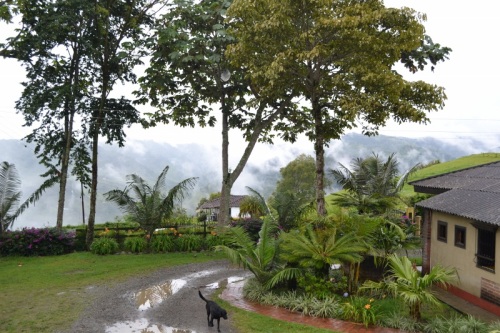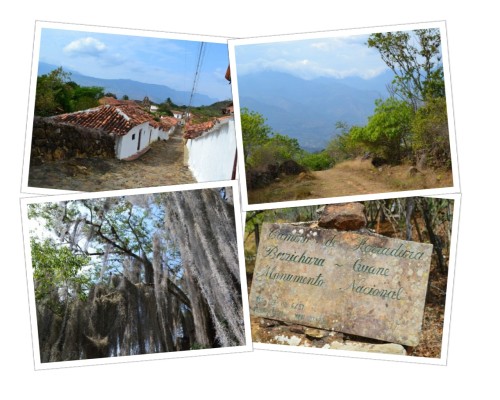We couldn’t help but to extend our days in Salento. It is like summer camp for adults. At the beginning of our stay, we had reserved only three nights, and then we added a few more, and then a few more, and before we knew it, we’d been there for more than a week. It is the perfect place to slow down and relax. If it weren’t for the flight we’d booked from Cali to the northern coast of Colombia, we may have stayed forever.
Hiking, coffee fincas, mystical clouds swirling around the green hills, great meals with great people, hammocks, games of tejo, delicious trucha con patacones, rainy days, campfires, fireflies, card games, movie nights & popcorn, humming birds, wax palms, hot springs…what is more to love?

We were lucky to catch this view of the Cocora Valley from the mirador in Salento, as clear days are few and far between.

We don’t normally advertise the places we stay on our blog, but La Serrana Eco Farm & Hostel was a big part of the reason that we chose to slow down our travel pace and just soak it all in. It is about a 20 minute walk from the town center and provide peace and serenity, especially on foggy mornings like this. We truly enjoyed our quiet walks through the country side. To be clear, La Serrana offered us nothing to mention their name, we just loved the place.

Hiking through el Valle de Cocora is likely Salento’s biggest tourist activity. These towering wax palm trees cover the valley floor and are stunningly beautiful.

After hours hiking, we stopped at a humming bird sanctuary, which was really more of a rustic lodge run by an elderly couple. Who said humming birds can’t be captured mid-wing flap? One Croatian traveler hiking the trail with us said it couldn’t be done without a tripod and special camera. Mike begged to differ and got this shot in just a matter of minutes.

As we descended back down the trail and out of the fog, we found ourselves once again surrounded by wax palms reaching towards the sky.

Have you ever had avacado flan? We hadn’t either before the incredible 8-course tasting menu prepared for us by Chef Michael Neff, a fellow guest at our hostel in Salento. Communal meals in the dinning hall added to the summer camp feel.

Hot springs Colombian style: pumping music, back flips, party time. Not exactly the relaxing day that we had envisioned for ourselves, but enjoyable nonetheless.

This chicken bus to the termales in Santa Rosa de Cabal made our day! Riding this bus turned out to be better than the hot springs themselves. The salsa music was blaring, and the driver slowed down to holler at every señorita in town.

The weather in Salento seemed to rotate between rain and shine. We took advantage of the sun one day to hike down to a nearby coffee finca. With views like this all around, you can imagine why we chose to stay for a while.

We took a tour of Don Elias’s coffee finca not far from our hostel. When these arabica beans are bright red, they are ripe and ready to pick.
















